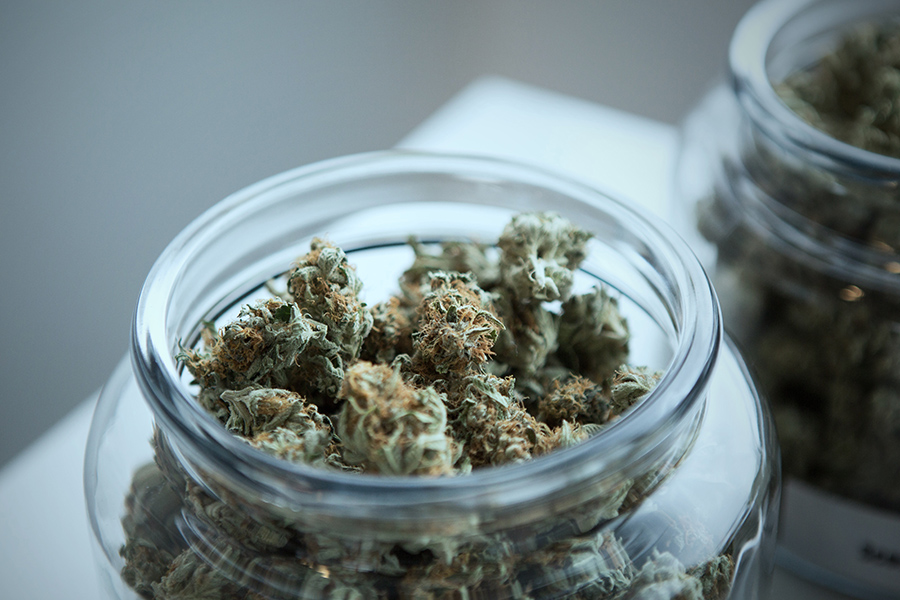
As states relax their medical and recreational marijuana laws, interest in the drug’s health effects has gained momentum in recent years. “It’s high time to address research into medical marijuana,” Senator Orrin Hatch of Utah, a long-time prohibitionist, said in a September 2017 statement that surprised many. “To be blunt, we need to remove the administrative barriers.”
Judging by the available research, ample evidence exists to indicate that marijuana can treat pain, nausea and multiple sclerosis. It can also harm lungs and the developing adolescent brain. Under certain circumstances, it can be addictive and increase the likelihood of auto accidents, low birth weight and, in cases of heavy use, schizophrenia.
One path of inquiry is the role played by the dozens of natural compounds found in the cannabis plant. Most famous is delta-9 tetrahydrocannabinol (THC) – the stuff that gets you high. THC content has climbed in the past 20 years, from about 4 percent to 12 percent, as growers select strains for THC potency. At the same time, the levels of cannabidiol (CBD), a non-psychoactive compound, has fallen. Yet researchers have observed that CBD can mitigate some of the disagreeable effects of THC, such as paranoia and psychotic symptoms.
A new paper looks into how the changing THC-CBD ratio may be having long-term neurological impacts on young marijuana users.
An academic study worth reading: “Chronic Adolescent Delta-9-Tetrahydrocannabinol Treatment of Male Mice Leads to Long-Term Cognitive and Behavioral Dysfunction, Which Are Prevented by Concurrent Cannabidiol Treatment,” in Cannabis and Cannabinoid Research, 2017.
A team of Indiana University researchers injected 221 male mice – both adolescents and adults – with THC, CBD, and a combination of THC and CBD for 20 days. For five days, starting 24 hours after the latest injection, and again after the mice had been drug-free for six weeks, the team subjected the mice to a battery of behavioral tests: did they recognize objects, did they shred wood chips as normal mice are prone to do, did they bury marbles? The tests assessed anxiety, memory and other traits common in schizophrenia.
Though the mice were all males, the authors believe they are representative: “Based on the rat literature, it is likely that treatment of female mice will also lead to persistent behavioral abnormalities.”
Key takeaways:
- Exposure to THC significantly decreased the adolescent and adult mice’s ability to recognize familiar objects.
- In adults, but not in adolescents, this impairment disappeared after several weeks.
- It appears “THC exposure during adolescence can lead to enduring cognitive impairment that is absent if THC is given during adulthood.”
- Exposure to THC with CBD “completely abolished the deleterious consequences of THC” for both groups of mice.
- CBD alone was found to have no effect on the behavioral tests.
- In an anxiety test after six weeks of clean living, the mice exposed to THC and CBD showed less anxiety than the mice exposed only to THC.
- The results suggest “that higher CBD content in cannabis reduces risk for psychotic disorders.”
Other resources:
See our extensive 2017 roundup on the little-known health effects of marijuana. We have also reviewed literature on how crime and drunk driving tend to fall after marijuana legalization and on the potential tax revenue from legal weed.
The National Institute on Drug Abuse regularly updates its fact sheet on marijuana. The Department of Health and Human Services publishes figures on marijuana use in the U.S., finding, for example, that 8.9 percent of Americans have used marijuana in the past month.
For Scientific American in 2016, David Downs wrote a history of the federal government’s “war” on marijuana. Downs, the cannabis editor at the San Francisco Chronicle, has also penned a glossary of marijuana terminology.
Research on the mitigating effect of CBD include this 2010 paper in Neuropsychopharmacology and this 2013 paper in the Journal of Psychopharmacology.
